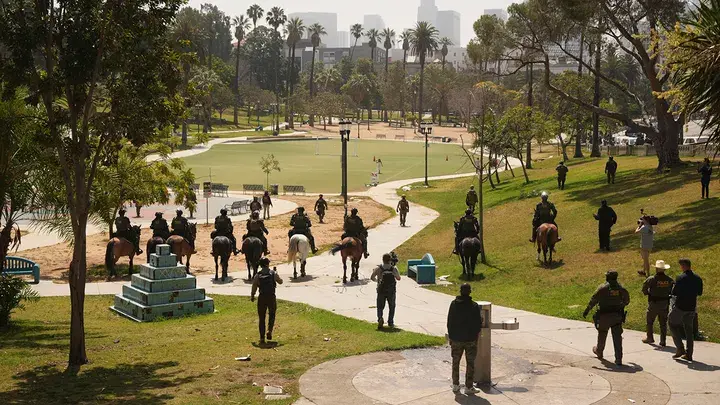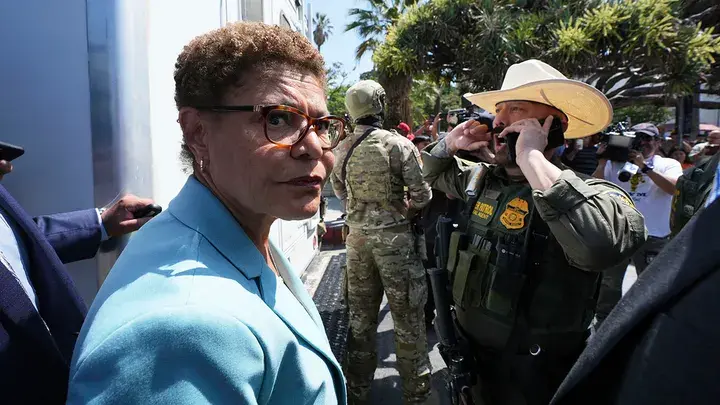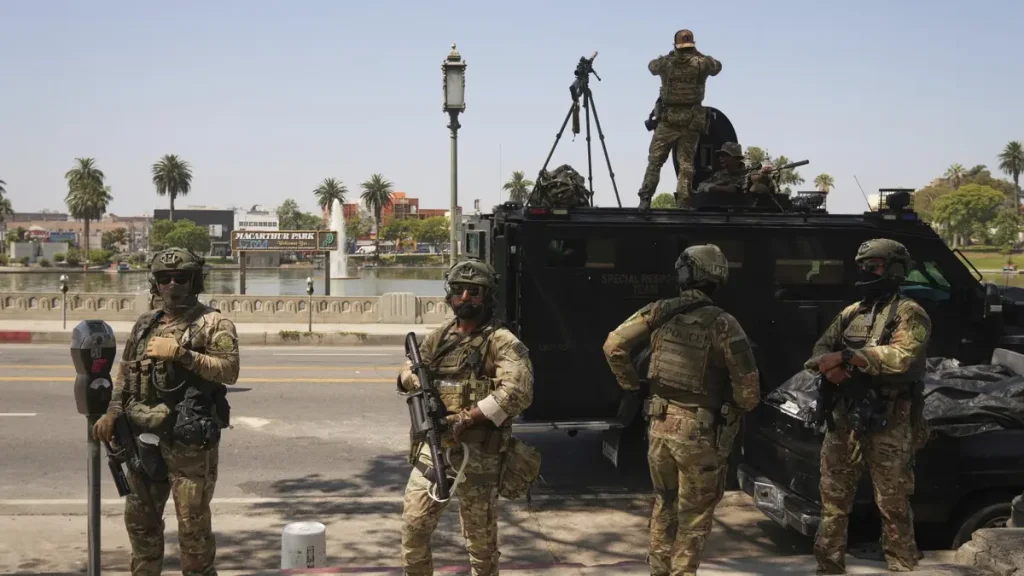A surprise ICE raid and heavy federal presence descended on MacArthur Park in Los Angeles, drawing comparisons to military operations and prompting accusations of intimidation within one of the city’s most diverse communities.
Where Is MacArthur Park?
MacArthur Park sits approximately 2 miles west of downtown Los Angeles, at the intersection of Wilshire Boulevard and Alvarado Street in the Westlake neighborhood. Often referred to as the “Ellis Island of the West Coast,” this urban green space and surrounding area are densely populated by immigrant families from Mexico, Central America, and elsewhere.
What Happened in MacArthur Park Today?
On Monday morning, around 90 National Guard troops and dozens of federal immigration agents — including Homeland Security Investigations (HSI) and U.S. Border Patrol — entered the park in a highly visible operation. Agents rode in tactical gear on horseback, flanked by armored Humvees, tactical vehicles, and unmarked vans.

The heavy presence lasted about an hour. Local authorities, including AP journalists on-site, reported no arrests, and the Department of Homeland Security declined to comment on enforcement actions. Mayor Karen Bass described the display as “outrageous” and “un-American,” and said the military-style operation traumatized summer camp children by rushing them indoors.

ICE Raid in MacArthur Park: A Show of Force
Despite labeling it a security operation, federal officials emphasized that the military presence was intended to protect immigration agents, not execute arrests. Defense Department spokespeople insisted that it was not a military mission, yet acknowledged the overwhelming scale of the deployment.
The unusual use of military equipment for domestic immigration enforcement continues a controversial trend in Los Angeles over the past month, following nationwide deportation efforts backed by President Trump.
The appearance of military-style vehicles and federal troops raised stark concerns about the militarization of immigration enforcement, as previously seen during controversial Home Depot and downtown LA raids. Governor Newsom criticized the spectacle as politicized “theater” and warned of dangerous precedents when military resources enter civilian law enforcement without oversight .
Community Outrage
News of the ICE raid sparked immediate concern among local residents. Community organizers preemptively warned that agents were en route and urged residents to avoid the park.
Observers described stark scenes: onlookers chanting, officials pointing guns at outreach workers, and children hurried away . Activist groups noted that the lively atmosphere of vendors and families was replaced by an eerie emptiness—“ghost town-ification”.
Local officials were swift to protest. Councilmember Eunisses Hernandez condemned the operation as targeting a park that symbolizes resilience and America’s immigrant dream. Mayor Bass personally confronted federal agents, demanding they leave and accusing them of terrorizing the city.
Legal and Political Implications
This ICE raid marks the latest clash in broader federal enforcement throughout Los Angeles. Since early June, over 1,600 people have been arrested in areas across the city, triggering large protests and the deployment of over 4,000 National Guard troops and hundreds of Marines.
California Governor Gavin Newsom has described these raids as political “theater” and is pursuing legal action, asserting the deployment violates constitutional protections and should not involve military personnel .
Officials warn that similar ICE in MacArthur Park operations could recur. Federal officials, including Sean Lyons from ICE, have stated that further activity may appear in LA parks and public spaces.
Community leaders and legal groups are preparing heightened defenses, distributing “know-your-rights” guides, setting up legal hotlines, and mobilizing residents to stay indoors during known enforcement times.
The highly visible ICE raid in MacArthur Park has intensified the ongoing debate over immigration enforcement tactics in Los Angeles. What began as a show of federal force swiftly transformed into a flashpoint for fear, resilience, and political resistance. As federal authorities signal this may be only the beginning, the spotlight remains on how cities balance enforcement with protecting the civil freedoms of diverse communities.


